Art World
Celebrate George Wesley Bellows’ Birthday With 10 of His Finest Works
His story goes much deeper than the glossy surface of his oil paintings.

His story goes much deeper than the glossy surface of his oil paintings.

Daniela Rios

American Realist painter George Wesley Bellows is known largely for his daring depictions of early 20th century life in New York City, but his story goes much deeper than the glossy surface of his oil-based works.
Bellows was born on August 12, 1882 in Columbus, Ohio and died of a ruptured appendix on January 8, 1925 at 42. When he was criticized for depicting events for which he was never present, in a clever comeback, the artist said he wasn’t aware that Leonardo da Vinci “had a ticket to paint the Last Supper.”
Following his early years in New York, he became a student of Robert Henri, who would later go on to deliver a proud message at his memorial. “I always gave him my most severe criticism because I thought he was my best pupil,” Henri said. “Now I am sure of it.” While studying at the New York School of Art, Bellows gained an interest in Henri’s group of artists called “The Eight,” who supported painting contemporary society in all its forms: the good, the bad, and the ugly.
During 1907–1915, Bellows constructed a series of paintings showing New York City during a period of heavy snowfall. He became obsessed with chiaroscuro, as developing a contrast between the gritty cityscapes teeming with workers, and the quiet beauty of snowy expanses in the park.
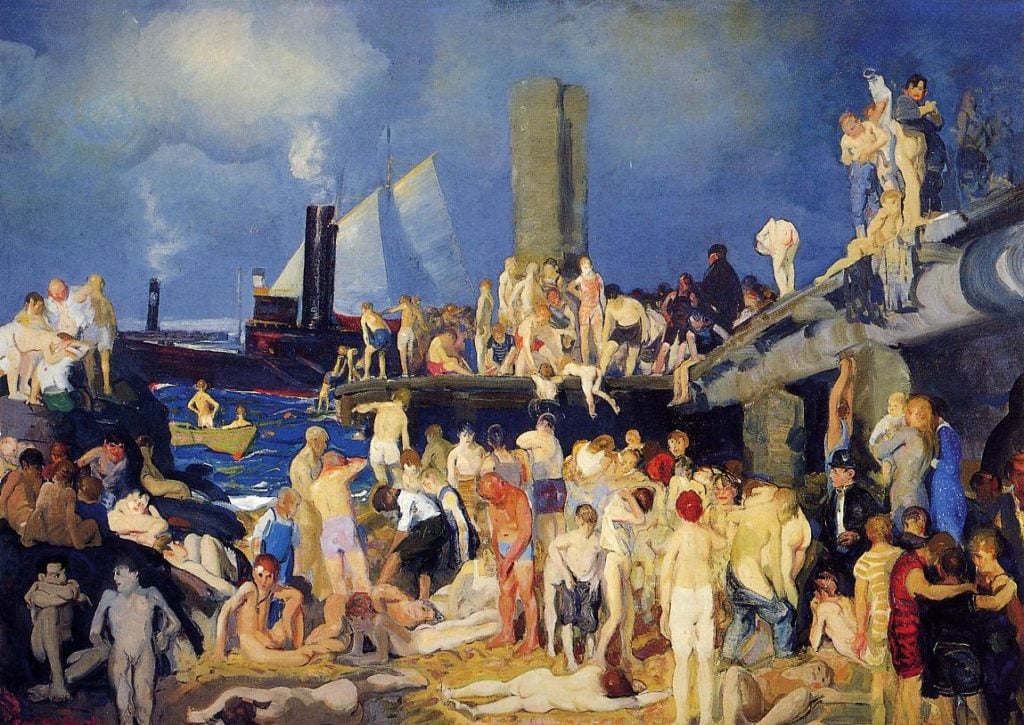
George Wesley Bellows, Riverfront No. 1 (1915). Courtesy of Columbus Museum of Art.
His focus on the male form has been picked up by later scholars. Bellows’ work was included in the landmark show, “Hide-Seek, Difference and Desire in American Portraiture,” which was on view at the Smithsonian’s National Portrait Gallery in 2011, and contained Shower Bath, a 1917 homoerotic lithograph by the artist depicting a rowdy bathhouse scene, as well as Riverfront No. 1 (1915).
Below are some key paintings by Bellows during his short, but memorable, career as an artist.
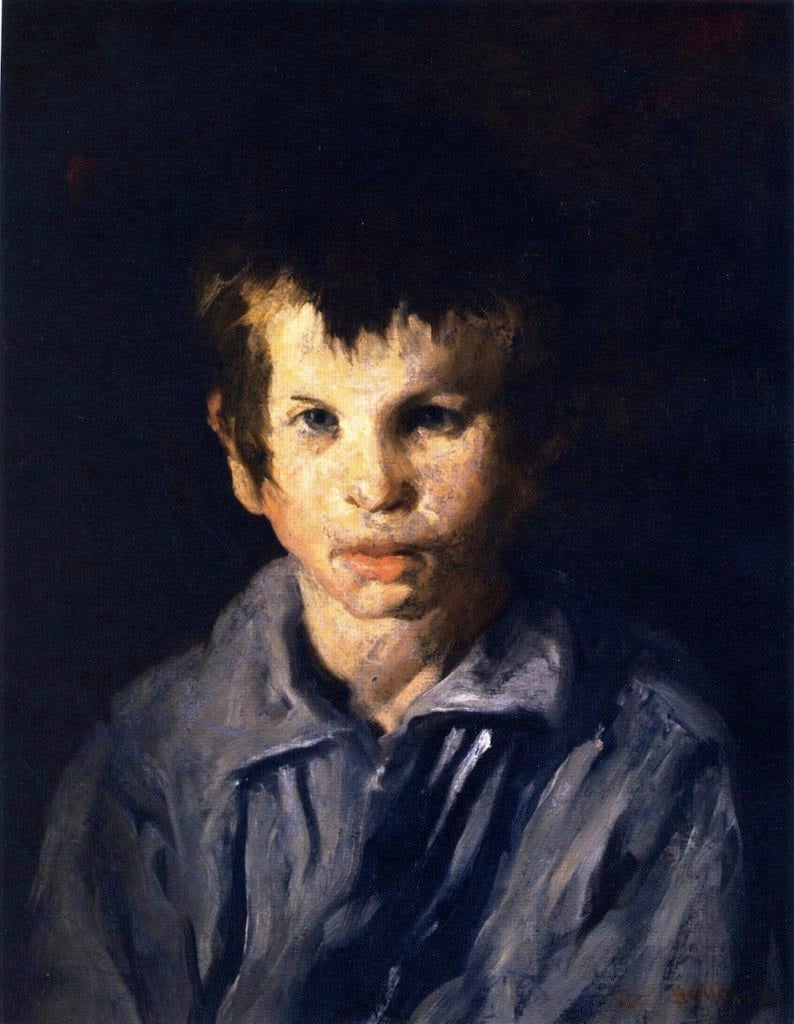
George Wesley Bellows, The Cross-Eyed Boy (1906). Courtesy of Mead Art Museum.
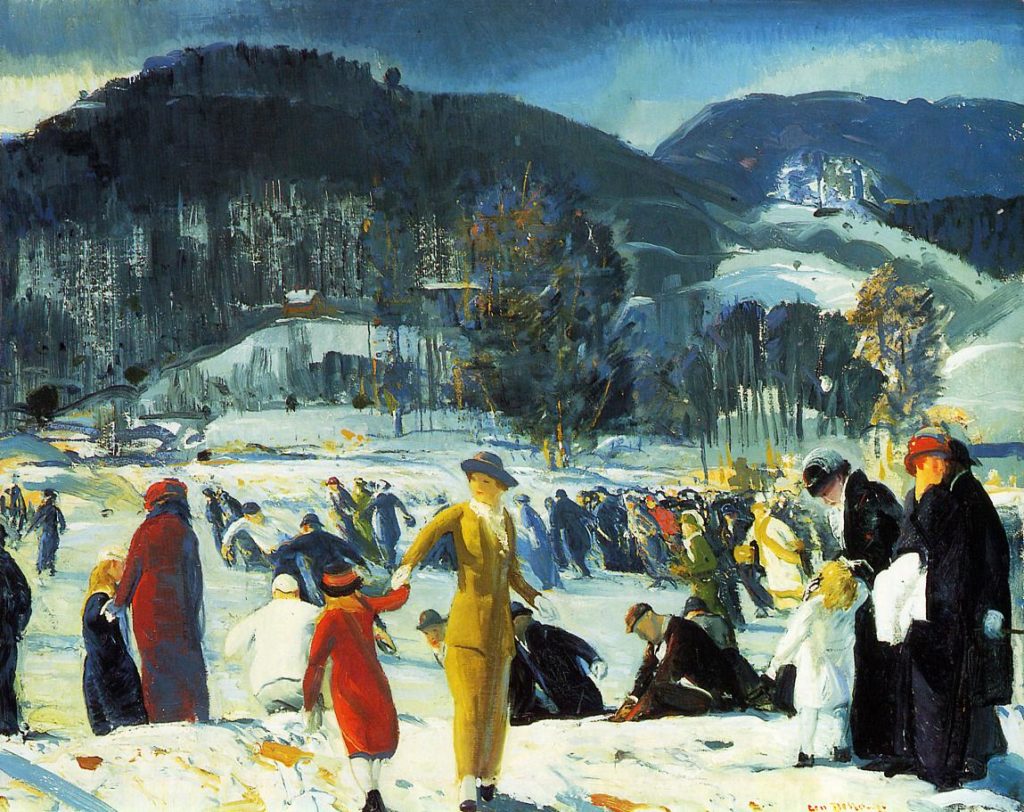
George Wesley Bellows, Love of Winter (1914). Courtesy of Art Institute of Chicago.
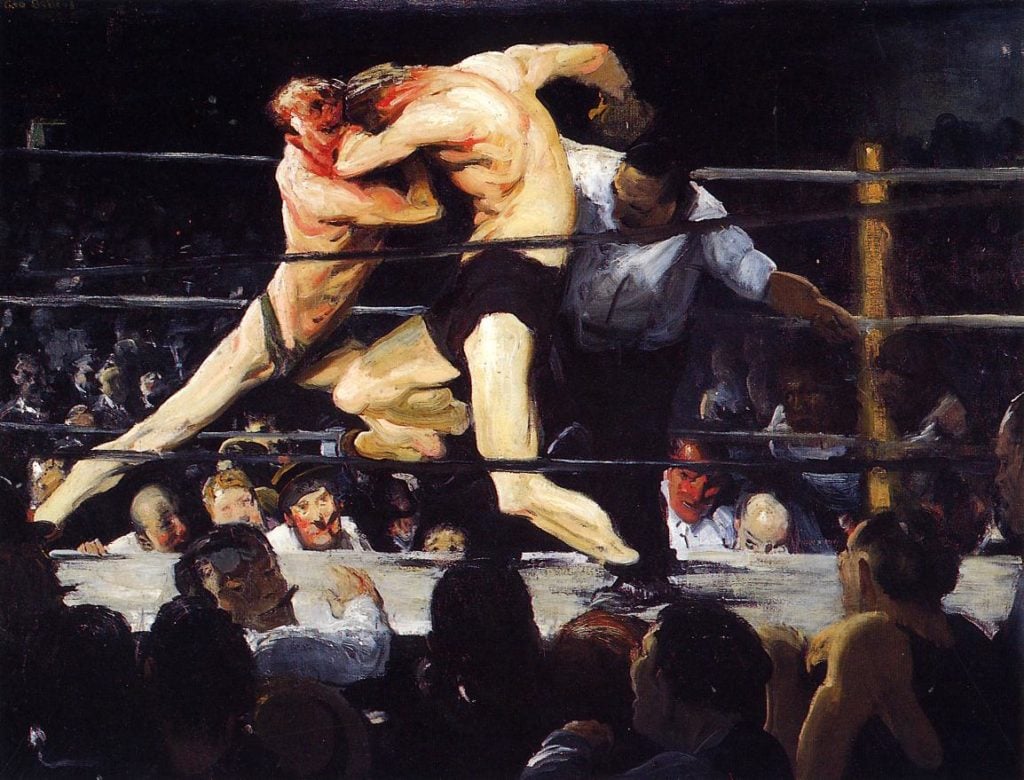
George Wesley Bellows, Stag Night at Sharkey’s (1909). Courtesy of Cleveland Museum of Art.
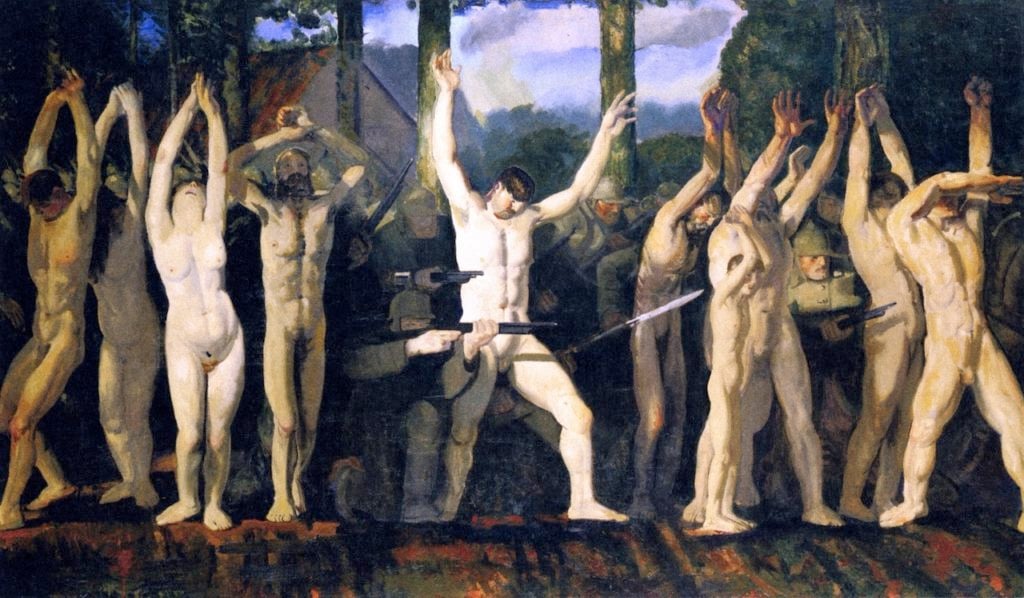
George Wesley Bellows, The Barricade (1918). Courtesy of Birmingham Museum of Art.
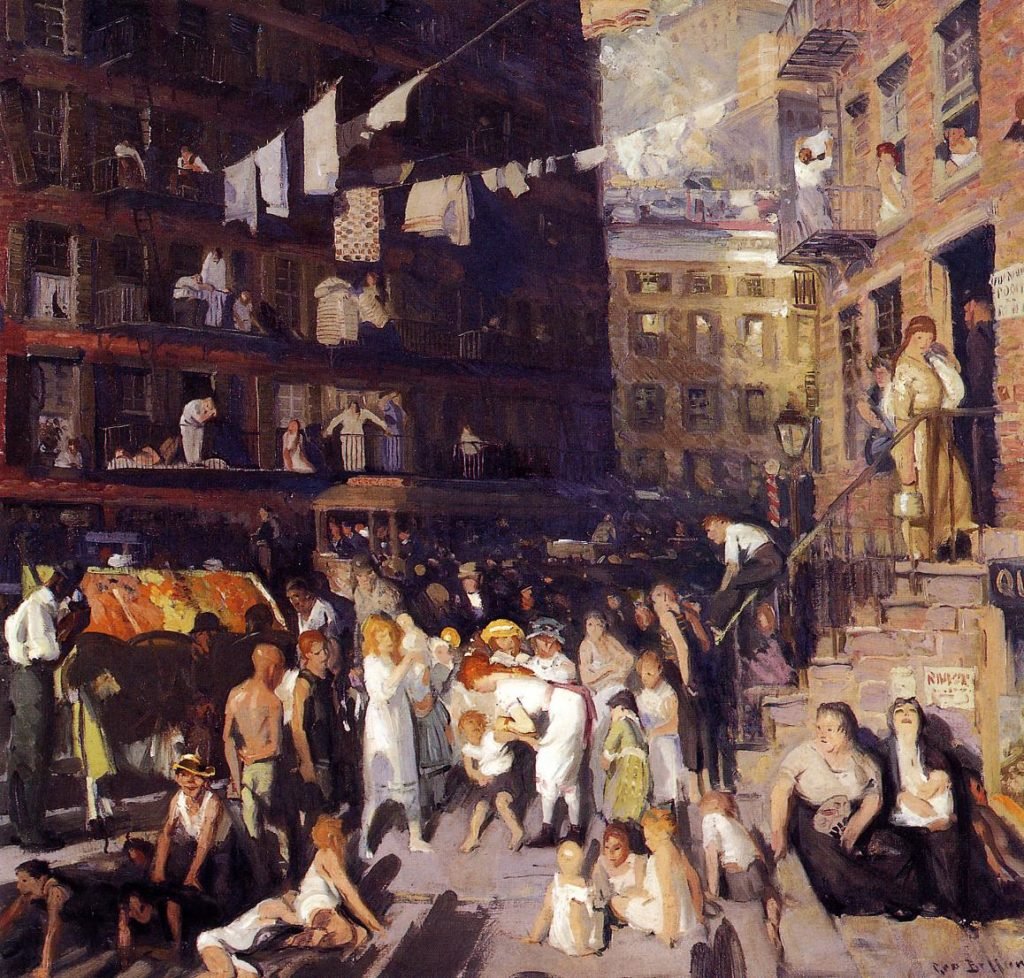
George Wesley Bellows, Cliff Dwellers (1913). Courtesy of Los Angeles County Museum of Art.

George Wesley Bellows, New York (1911). Courtesy of National Gallery of Art.
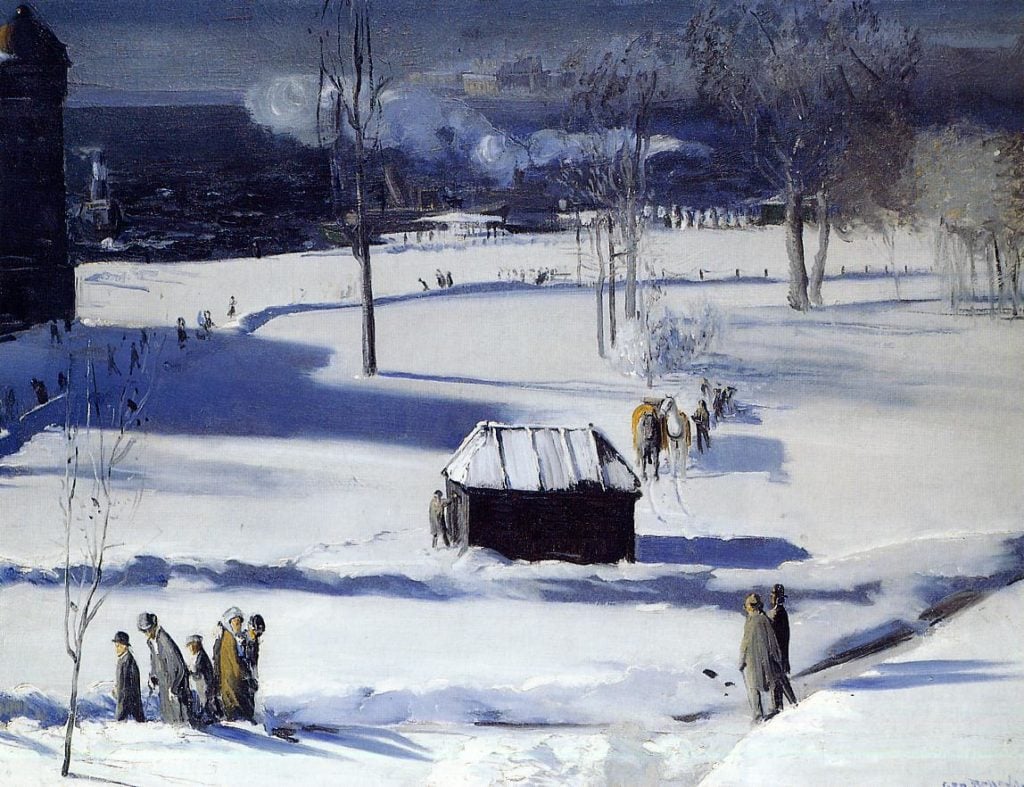
George Wesley Bellows, Blue Snow, The Battery (1910). Courtesy of Columbus Museum of Art.

George Wesley Bellows, Club Night (1907). Courtesy of National Gallery of Art.